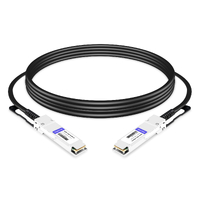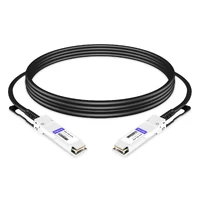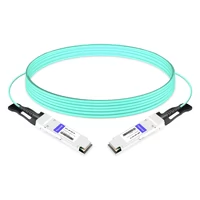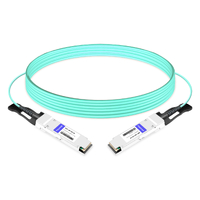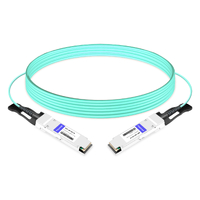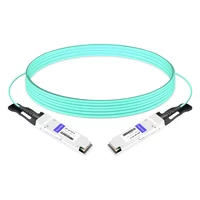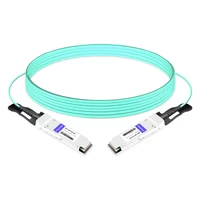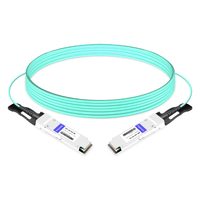High-speed connectivity is essential in the constantly changing world of data communication, especially for applications requiring large bandwidth. This guide will examine Quad Small Form-factor Pluggable (QSFP) cables specifically used for 40G direct attach. Compact and efficient, QSFPs allow switches to communicate seamlessly with servers and storage devices. This article hopes to arm readers with what they need to know before choosing their networking setup by discussing specifications, benefits, and use cases around these cords. Whether you work in IT or are just interested in it as a hobbyist, being more aware of your choices regarding 40G direct attaches will help you better understand one of the most important parts of modern-day data transmission systems.
Table of Contents
ToggleWhat are QSFP Cables and Their Uses?
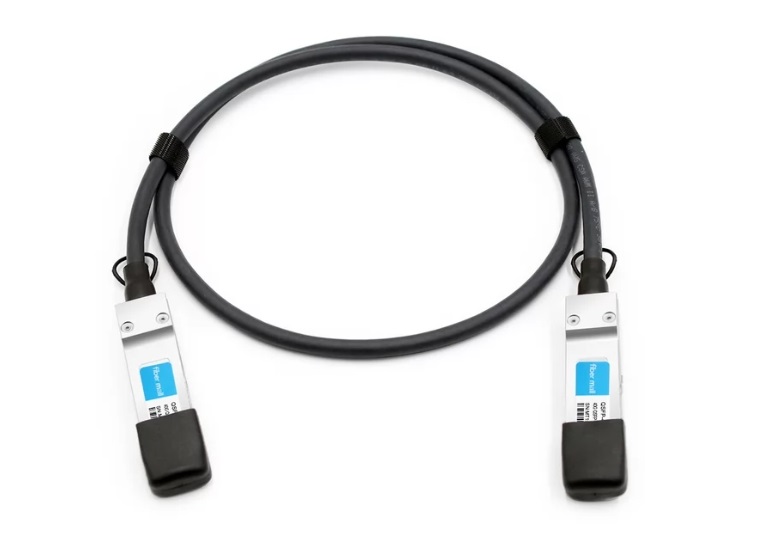
What is a QSFP Cable?
A QSFP (Quad Small Form-factor Pluggable) cable is a high-density optical or copper connection solution for high-speed data transmission. Specifically, it accommodates data rates of 40Gbps per port, making it an ideal choice for data centers and high-performance computing environments. Multiple channels are used in QSFP cables, which provide better bandwidth use while taking less physical space than traditional cabling solutions. Networking, storage area networks, and HF trading, where reliability and speed are critical, are often employed.
Common Applications of QSFP Cables
QSFP cables are used in many applications that require faster data transfer and greater reliability. These include:
- Data Center Networking: QSFP cables are widely used to connect switches and routers in data centers, allowing devices to communicate with each other quickly.
- High-Performance Computing (HPC): QSFP cables offer the bandwidth for large computations in power-hungry environments like scientific simulations or complex data analysis.
- Storage Area Networks (SANs): These wires link servers and storage devices together, increasing enterprise-level application speeds by ensuring rapid information transfers.
- High-Frequency Trading (HFT): In finance, where every millisecond counts, QSFPs help reduce latency between trading platforms or market servers and optimize transaction speeds.
- Telecommunications: They maintain high-speed connections among different network components within telecom infrastructures, which allows efficient handling of data and communication. Copper cable assemblies are also commonly found here.
This shows how versatile and practical this technology can be to solve contemporary networking requirements.
Benefits of Using QSFP Cables in Networks
There are many benefits to using QSFP cables in networking design. Firstly, they facilitate the seamless operation of bandwidth-heavy applications by supporting extremely high data transfer rates – up to and beyond 100 Gbps – thereby reducing congestion. Secondly, the small size of these cables optimizes space in data centers, increasing density and promoting better airflow around equipment. Additionally, this technology is scalable, allowing for future upgrades or expansions without replacing the entire system. Moreover, their sturdy construction makes them reliable over long distances where signal degradation could occur otherwise. Finally, compared with conventional cabling options like SFP+ or 10GBASE-T copper cabling, which consumes more power than QSFPs, it is an energy-efficient choice for high-performance networks.
How Do Direct Attach Copper Cables Differ from Optical Cables?
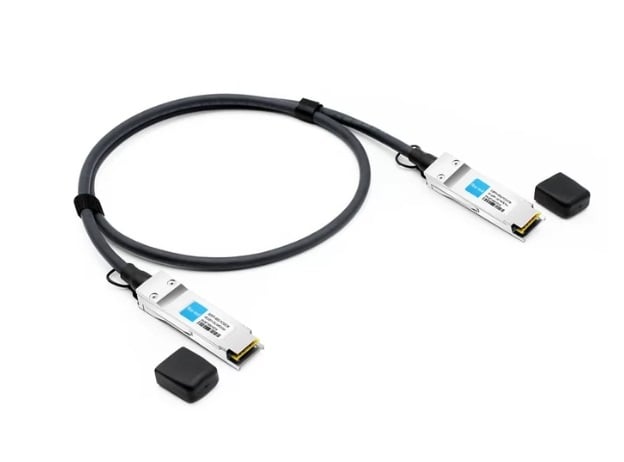
Differences Between Passive and Active Optical Cables
Passive optical cables (POCs) and active optical cables (AOCs) differ in their function and are based on distinct technologies, which result in varied performance levels.
- Technology: Passive optical cabling consists of bundles of fiber optics with no active components. Data transmission relies only on light physics. It is simpler and less expensive for short distances, making it ideal for quick setups. On the contrary, AOCs contain electronic parts that electrically convert signals into optical ones and the reverse to improve signal quality over longer distances.
- Distance: POCs work best within a range of 100 meters or less that suits in-rack installation, while AOCs can effectively transmit data over more than 100 meters between racks where long-distance integrity is critical. Active Optical Direct-Attach Cables become necessary under these conditions.
- Power Consumption: Since passive optical cabling does not contain electrical elements, it does not draw any power, leading to lower operational costs compared to active systems, which need higher energy usage due to built-in transceivers required for operation over extended ranges.
To sum up, when choosing between passive or active optical cable types, one should consider specific application requirements, taking into account the distance covered, power needed, and budget limitations, among other factors, such as those provided by Amphenol cables on-demand services designed specifically for this purpose.
Why Choose Direct Attach Copper Cables Over Optical?
Direct Attach Copper (DAC) can be more effective in specific applications than optical cables. Here are some reasons why.
- Cost Efficiency: Compared to optical counterparts, DAC cables are less expensive; a direct attach cable effectively connects at short distances. Large-scale installations benefit from lower overall costs due to the absence of complicated electronic parts and cheaper production methods.
- Simplicity and Compatibility: DACs fit many types of current networking devices without needing extra transceivers. This plug-and-play feature, which reduces the complexity usually found in optical solutions deployment, makes the installation process easier.
- Low Latency Performance: Short connections involving minimal signal conversion make DACs operate with low delay and high performance, especially in critical data centers where speed matters most. Their ability to sustain signal integrity without requiring multiple changes improves overall data transmission reliability.
To sum up, although optical cables work better over longer distances within high-performance environments, dense networks should consider using cost-effective alternatives like Dak for short-range applications.
When should Passive DAC and AOC cables be used?
Evaluating the specifics of an application is vital when determining whether to use Passive Direct-Attach Copper (DAC) cables or Active Optical Cables (AOC). In data centers and similar settings where cost-effectiveness matters most, passive DACs are designed for short-distance connections that typically do not exceed 7 meters. They also work best in high-speed applications with bandwidth requirements that can tolerate low latency.
Conversely, AOC cables should be used when distances greater than 100 meters require lightweight designs. They travel through compact areas within a system’s cabling infrastructure while offering additional circuit protection as needed by their built-in optical transceivers. Such capabilities allow them to deliver superior performance over long distances without adding much weight compared to copper wires.
In summary, use Passive DACs when considering budget-friendly projects involving high speeds and short ranges; otherwise, consider AOCs if you need something lighter and more flexible for medium to long distances.
What Are the Key Specifications to Consider When Choosing a QSFP Cable?
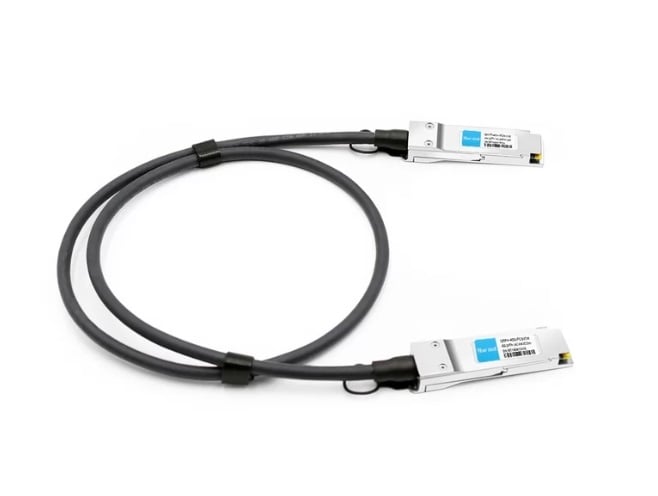
Understanding Cable Length Options: 0.5m, 1m, 10m
Cable length is a key factor that affects performance and compatibility when choosing a QSFP cable.
- 0.5m Cables: Because they are short, these wires usually connect devices placed next to each other in a rack while decreasing signal degradation and minimizing latency. Furthermore, Amphenol cables on demand offer different configurations for this purpose.
- 1m Cables: The 1m cables provide slightly more length than the previous type without sacrificing their capacity to work over short distances effectively. They can be used where two devices are close enough but not directly adjacent to each other, thus ensuring high-speed connectivity remains uncompromised.
- 10m Cables: In data centers or networking environments requiring longer distances between devices, which may happen often due to the large servers used nowadays, among other reasons, you should use 10m cables instead of any other type because they have been proven reliable under such circumstances as well as able support very high data rates still. However, there might be some signal loss over extended runs. Therefore, you should plan your cabling wisely so it doesn’t affect performance too much.
To sum up, one must match cable length with the specific layout of the network and connection needs, considering performance space limitations, operational efficiency, etc., while also guaranteeing quality durability from OEMs across different types of networks.
Bandwidth and Data Rates: 10G, 40G, 100G
When evaluating QSFP cables, bandwidth and data rates become fundamental specifications based on which network capacity and performance capabilities are determined.
- 10G QSFP Cables: These cables serve 10 Gigabit Ethernet (10GbE) applications in high-throughput environments. They are used in enterprise networks, data centers, and storage area networks (SANs) where considerable data transfer is needed. Short-distance applications usually employ multimode fiber (MMF), which provides enough bandwidth for real-time data processes.
- 40G QSFP Cables: These cables work at 40 Gigabits per second, which is often found in high-performance computing and large-scale data centers. Quad Small Form-factor Pluggable technology (QSFP+) combines four 10G signals. It enables efficient connectivity of switches and routers, significantly boosting the network’s ability to handle much larger amounts of data while ensuring reliable performance over moderate distances.
- 100G QSFP Cables: These are critical for modern networking infrastructures that require ultra-high data rates. The 100G technology mostly uses a QSFP28 form factor that can either carry multiple 25G signals or use advanced modulation techniques. Cloud data centers and high-density interconnections make good use of these components as they offer exceptional bandwidth suitable for managing the increasing flow of information within an ever-evolving digital ecosystem.
To sum up, selection for both bandwidth and data rates should correspond with specific operational requirements, anticipated growth, and other factors to ensure optimal performance and reliability throughout your overall network architecture.
The Role of Connectors in QSFP Cables
Connectors are a key part of QSFP cables and help devices communicate with each other in fast networks. The Quad Small Form-factor Pluggable (QSFP) connectors can hold numerous optical or electrical signals while small. They offer strong connections and ensure that very little signal is lost or interfered with, which is crucial in high-capacity environments. Furthermore, the design of these plugs allows them to be swapped without having to turn off any power – this means it’s easy to change out a faulty connector without causing any disruption to the network as a whole. Such flexibility becomes invaluable within data centers where uptime is critical because things are always changing. Modern high-speed communication systems rely on the dependable performance and wide application range of QSFPS for their infrastructure to support functions efficiently.
Are There Different Types of QSFP Cables for Various Network Equipment?
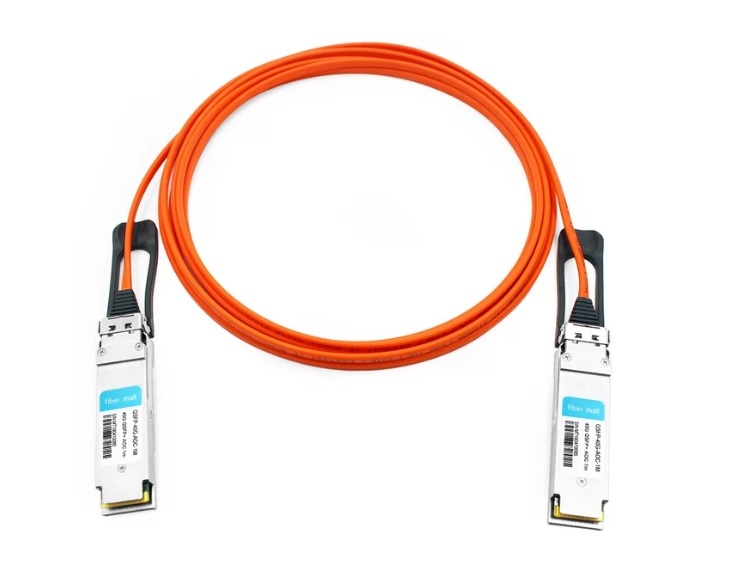
QSFP28 for High-Speed Connections
QSFP28 cables are created to accommodate high-speed connections, which can send data at 100 Gbps per port. These Amphenol demand cables provide top performance. This technology works by using four lanes of 25 Gbps each, allowing for short and long-distance data transmission. QSFP28 cable applications include data center interconnects, high-performance computing, and telecommunications with critical bandwidth requirements. In terms of optimal performance, the ideal QSFP28 cables should be passive or active, but in general, passive ones work best over shorter distances (up to 100 meters), while active ones can go as far as 400 meters. The versatility and scalability of these wires make them popular among next-generation network architectures that support different types of traffic, which are increasing all the time due to the digital revolution happening everywhere.
Compatibility with Cisco, Dell, Juniper, and Arista
QSFP cables are intended to be widely compatible with major networking equipment manufacturers, such as Cisco, Dell, and Juniper. Cisco devices typically accommodate QSFP connectors, which allows them to work seamlessly with their routers and switches, especially in high-density environments. On the other hand, Dell’s networking products support this type of cable as well, thus facilitating efficient data center operations with fast transfer speeds. For instances where scalable network configurations are required, Juniper’s QFX series switches and routers can connect using QSFP28 connections. Arista’s switches also use QSFP technology to meet the needs of high-performance networks for cloud or enterprise applications. In general, having many different brands that support one connector, like the QSFP, enhances interoperability between various types of networks.
SFP+ and QSFP+ Differences
SFP+ (Small Form-factor Pluggable Plus) and QSFP+ (Quad Small Form-factor Pluggable Plus) are transceiver formats used in data communication, but they serve different applications and have distinct characteristics. SFP+ supports data rates of up to 10 Gbps per channel, typically used for 10 Gigabit Ethernet. At the same time, QSFP+ accommodates multiple channels, allowing a data rate of up to 40 Gbps by combining four 10Gbps channels into one, thus making it suitable for high bandwidth applications.
Regarding size, SFP+ modules are smaller and designed for single-channel connections, making them ideal for less demanding bandwidth requirements that also take up less space. For short-distance connections, these modules can be mated with copper cable assemblies. On the other hand, larger QSFP+ modules reflect their ability to support higher data throughput with many channels; this makes them appropriate in high-density environments where scalable architectures are needed. Both formats can be swapped between network equipment that supports the respective types of transmitters, ensuring flexibility in design while catering to different needs regarding bandwidth within a system.
How do you troubleshoot common issues with QSFP cables?
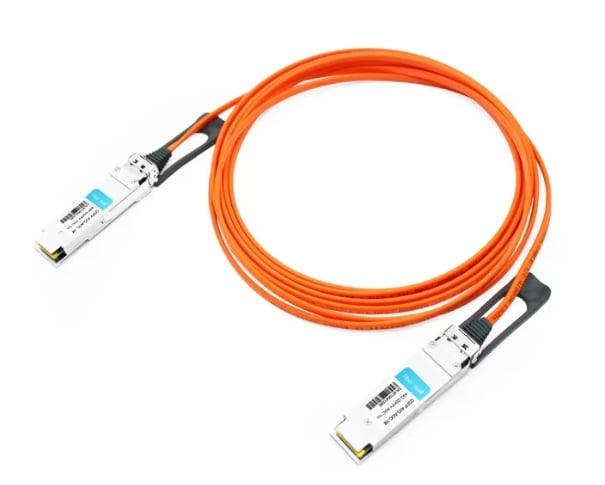
Diagnosing Transmission Problems
Troubleshooting transmission problems with QSFP cables requires a systematic approach. First, check the physical connections to make sure that the QSFP modules are seated properly in their ports. Loose connections can cause signal loss. Amphenol on-demand cables provide reliable and secure connectivity solutions. After that, look for visible signs of damage to the cable, such as cuts, bends, or kinks, which might affect its performance.
A network monitoring tool could help identify specific error rates, latency issues, or other anomalies in data transmission that may indicate a bad cable/module combination. It is also good practice to test cables in different ports or with alternate equipment so you can narrow down where exactly things went wrong. For continued malfunctioning, consider performing loopback tests; this will tell if there is something wrong with your QSFP media converters or even just faulty wires. Finally, ensure that all devices have updated their firmware recently – outdated software can create compatibility problems, leading to connectivity failure and compromising transmission integrity altogether! Sustained compatibility usually comes bundled with OEM solutions’ software updates.
Handling Latency and Speed Issues
To solve problems with delay and speed in QSFP cables, you should start by looking at how the network is set up. This can help to ease delays caused by congestion. Moreover, Quality of Service (QoS) methods can prioritize important traffic, which improves the performance of applications that are sensitive to delay.
Specialized tools for regularly monitoring network performance help spot bottlenecks along the network path. These tools keep track of latency while providing insight into packet loss or jitter. If persistent latency issues exist, you might want to check out other areas of your entire topology because there may be some inefficient routing or switching paths causing slowness.
Upgrading switches routers, and other components to higher throughput models may support faster data transmission rates. Additionally, using updated protocols like Ethernet and ensuring all devices comply with current standards will further enhance speed across the whole system, thus reducing latencies over time.
Correcting Connector and Cable Assembly Faults
Inspecting the connectors and cables is crucial in correcting faults related to connectors and cable assemblies. First, see that the connectors are seated correctly and locked, as an improper connection can cause signal degradation and intermittent connectivity. In addition, check if the integrity of the cable itself has been maintained by looking for signs of damage, such as fraying, kinks, or sharp bends.
A cable tester can help identify faults in an assembly. Your equipment should be compatible with qualified passive copper cables for reliable connections. These tools can confirm the continuity of connections and check within the cable for shorts or opens. Where a fault is identified, replacement/repair must be done on affected sections using appropriate techniques while ensuring adherence to wire management and assembly standards. Also, when making new connections, follow recommended specifications on termination techniques along with strain relief so that future problems are avoided. To maintain optimal network performance, regular maintenance schedules should be implemented, which involve routinely checking the document integrity of connectors as well as inspecting cable assemblies.
Reference Sources
Frequently Asked Questions (FAQs)
Q: What is a DAC cable?
A: A DAC (Direct Attach Copper) cable is a type of high-speed, short-distance connectivity solution used to connect networking devices near each other and often within the same rack or adjacent racks.
Q: What is a passive direct attach copper cable?
A: A passive direct-attach copper cable doesn’t contain built-in electronics for signal conditioning or amplification. When qualified, they are reliable and cost-effective solutions. These cables transmit Ethernet signals directly between devices using passive copper only.
Q: What’s the difference between active optical cables and passive copper cables?
A: Active optical cables use transceivers, and fiber optic technology allows them to transmit signals over longer distances with greater performance efficiency than other types of wires, like passive DACs, which typically work best at shorter lengths such as three meters (3m) or five meters(5m).
Q: What benefits can you get from using passive copper wires?
A: Compared to more complex active alternatives, lower latency, reduced power consumption, next-generation performance, and all at a competitive price point make them suitable for short-range high-speed Ethernet connections.
Q: How do twinaxial cables function in networking?
A: Twinaxial cabling refers to coaxial wiring containing two conductors designed specifically for high-frequency transmission. It is found mostly within telecom applications involving copper assemblies, though it also fits well into network environments, where it’s frequently deployed for inter-switch server communication among data centers.
Q: Can I use QSFP28 to QSFP28 DAC cables for 100G Ethernet connections?
A: Absolutely! The design of QSFP28 to QSFP28 DAC cables is meant explicitly for 100G Ethernet connections. They provide high-speed data transmission in enterprise networking environments and data centers.
Q: What does a 40G QSFP direct attach copper twinax cable mean?
A: It is a passive, high-speed copper cable that connects devices through the 40GBASE Ethernet ports, ensuring fast and reliable short-distance connections in the data center.
Q: Are DAC twinax cables suitable for use with 40GBASE applications?
A: Yes, they are! They are perfect for this application. They have low latency and power consumption while providing high-speed ethernet connectivity, ideal for short-reach interconnects.
Q: What purpose do breakout cables serve in networking?
A: Breakout cables take one high-speed connection and split it into multiple lower-speed ones. For example, you can use a 40G QSPF+ to 4x10g SFP+ breakout cable to connect a single forty-gig port to four ten-gig ports, which allows more flexibility when designing or scaling networks.
Q: Which brands produce quality DAC cables?
A: Amphenol specializes in the on-demand production of quality cabling solutions across various fields. Another great option is Meraki, which offers dependable Ethernet products explicitly designed for network connectivity.
Related Products:
-
 QSFP-40G-PC50CM 50cm (1.6ft) 40G QSFP+ to QSFP+ Passive Copper Direct Attach Cable
$16.00
QSFP-40G-PC50CM 50cm (1.6ft) 40G QSFP+ to QSFP+ Passive Copper Direct Attach Cable
$16.00
-
 QSFP-40G-AC1M 1m (3ft) 40G QSFP+ to QSFP+ Active Copper Direct Attach Cable
$125.00
QSFP-40G-AC1M 1m (3ft) 40G QSFP+ to QSFP+ Active Copper Direct Attach Cable
$125.00
-
 QSFP-40G-AOC-1M 1m (3ft) 40G QSFP+ to QSFP+ Active Optical Cable
$70.00
QSFP-40G-AOC-1M 1m (3ft) 40G QSFP+ to QSFP+ Active Optical Cable
$70.00
-
 QSFP-40G-AOC-2M 2m (7ft) 40G QSFP+ to QSFP+ Active Optical Cable
$72.00
QSFP-40G-AOC-2M 2m (7ft) 40G QSFP+ to QSFP+ Active Optical Cable
$72.00
-
 QSFP-40G-AOC-3M 3m (10ft) 40G QSFP+ to QSFP+ Active Optical Cable
$73.00
QSFP-40G-AOC-3M 3m (10ft) 40G QSFP+ to QSFP+ Active Optical Cable
$73.00
-
 QSFP-40G-AOC-5M 5m (16ft) 40G QSFP+ to QSFP+ Active Optical Cable
$75.00
QSFP-40G-AOC-5M 5m (16ft) 40G QSFP+ to QSFP+ Active Optical Cable
$75.00
-
 QSFP-40G-AOC-50M 50m (164ft) 40G QSFP+ to QSFP+ Active Optical Cable
$125.00
QSFP-40G-AOC-50M 50m (164ft) 40G QSFP+ to QSFP+ Active Optical Cable
$125.00
-
 QSFP-40G-AOC-75M 75m (246ft) 40G QSFP+ to QSFP+ Active Optical Cable
$165.00
QSFP-40G-AOC-75M 75m (246ft) 40G QSFP+ to QSFP+ Active Optical Cable
$165.00

